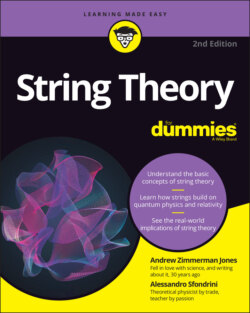Читать книгу String Theory For Dummies - Andrew Zimmerman Jones - Страница 70
The myth of the scientific method
ОглавлениеIn school, many of us were taught that science follows nice, simple rules called the scientific method. These rules are a classical model of scientific investigation based on principles of reductionism and inductive logic. In other words, you take observations, break them down (the reductionism part), and use them to create generalized laws (the inductive logic part). String theory’s history certainly doesn’t follow this simple model.
The steps of the scientific method students are taught actually change a bit depending on the textbook schools use in a given year, though they generally have mostly common elements. Frequently, they are delineated as a set of bullet points:
Observe a phenomenon: Look at nature.
Formulate a hypothesis: Ask a question (or propose an answer).
Test the hypothesis: Perform an experiment.
Analyze the data: Confirm or reject the hypothesis.
In a way, this scientific method is a myth. You may earn a physics degree from a top college without once being asked a question about the scientific method in a physics course. (Though it may come up if you dabble a bit more in the philosophy of science or similar courses.)
Turns out, there’s no single scientific method that all scientists follow. Scientists don’t look at a list and think, “Well, I’ve observed my phenomenon for the day. Time to formulate my hypothesis.” Instead, science is a dynamic activity that involves a continuous, active analysis of the world. It’s an interplay between the world we observe and the world we conceptualize. Science is a translation between observations, experimental evidence, and the hypotheses and theoretical frameworks that are built to explain and expand on those observations.
Still, the basic ideas of the scientific method do tend to hold. They aren’t so much hard-and-fast rules, but they’re guiding principles that can be combined in different ways depending on what’s being studied.
One of the best situations for a scientist to be in is to observe a pattern or trend in phenomena, and then use that to make a precise prediction about some other phenomenon that hasn’t yet been observed. This provides the basis for a new experiment or observation that, if it matches the prediction, provides an excellent foundation for thinking the line of reasoning that led to the prediction was probably on the right track.
